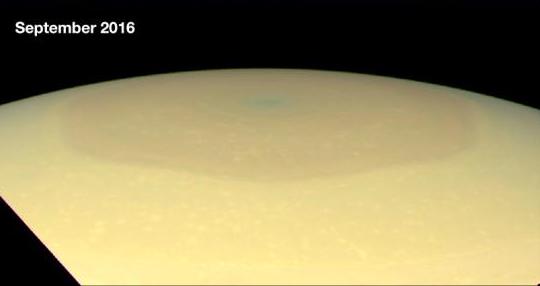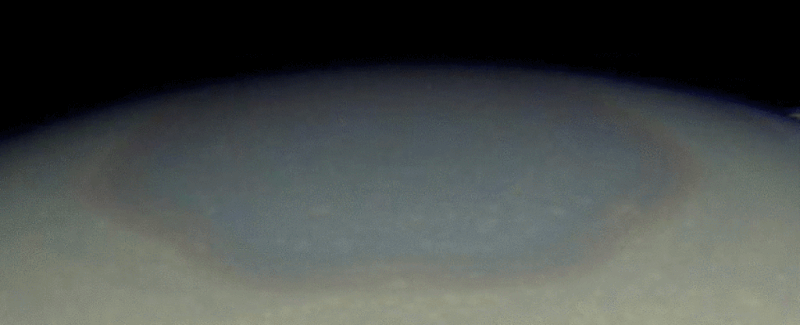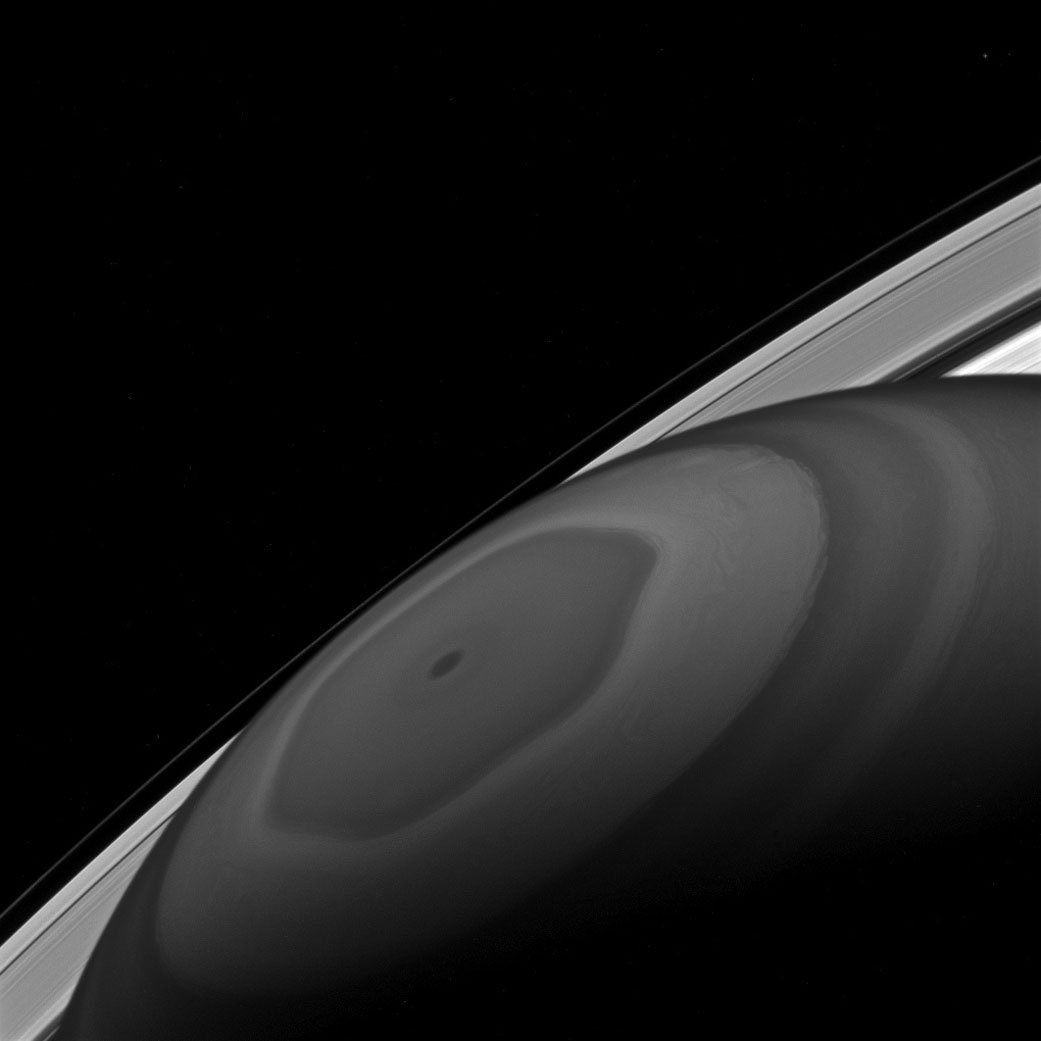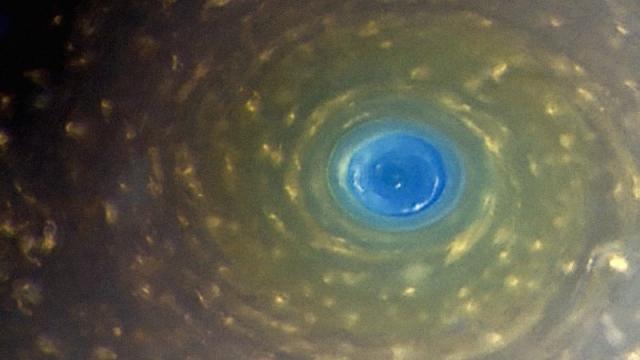Recently, Gizmodo space writer Rae Paoletta called Saturn “the golden retriever of the solar system”, and I’m not here to dispute that characterisation. But it was a lot easier to think of Saturn as a golden retriever when the planet’s defining hue was, y’know, gold. Not blue.
Image: NASA/JPL-Caltech/SSI/Jason Major
Some incredible new shots of the atmospheric vortex at the centre of Saturn’s north polar hexagon were captured by NASA’s Cassini spacecraft this week, and brought to our attention in a tweet by space enthusiast Jason Major. The images were snapped during the latest of Cassini’s ring-grazing orbits, which have so far yielded stunning glimpses of Saturn’s rings, and its delightfully pasta-shaped moons.
And now, this.
Cassini just got another view of the 1,800-mile-wide vortex at #Saturn‘s north pole and holy $#!& just look at it pic.twitter.com/GMv5scXBbr
— Jason Major (@JPMajor) March 31, 2017
Major compiled the image from raw data that was posted to Cassini’s image archive yesterday. “If I see something interesting and it also happens to have been captures in visible-light colour channels, I assemble a colour version in Photoshop to see what the awesome level is,” Major told Gizmodo over Twitter DM. “That vortex pic was a 10.”
In case you were wondering, below is what the same polar vortex — a 2000km-wide hurricane that sits at the centre of a much larger six-sided jet stream, often referred to as Saturn’s hexagon — looked like last October. There’s a hint of cerulean toward the centre, but if the new image (which has not been validated or calibrated by NASA) is to be believed, things have gotten a tad more dramatic up north over the past few months. Major has been documenting some of the recent changes to the vortex on his blog.

NASA/JPL-Caltech/Space Science Institute/Hampton University
This wouldn’t be the first time Saturn has displayed uncanny, chameleon-like abilities. In fact, the image above is pulled from a press release NASA issued last October, which noted a striking colour change across the entire north polar hexagon from 2012 to 2016. Here’s a GIF that illustrates its evolution over time:

Saturn’s north polar hexagon in November 2012 (blue) contrasted with October 2016 (yellow). Image: NASA/JPL-Caltech
NASA has hypothesised that the colour change between 2012 to 2016 was due to “increased production of photochemical hazes in the atmosphere as the north pole approaches summer solstice in May 2017”. In other words, as Saturn’s north pole tilted sunward, interactions between sunlight and atmospheric compounds that produce haze started increasing, changing the hexagon’s overall hue. As Kunio Sayanagi of the Cassini Imaging team noted in 2013, the hexagon acts as a particle barrier “like Earth’s ozone hole”. It’s difficult for bits of the atmosphere to cross in and out, so any chemical changes within the hexagon tend to stay within the hexagon.
At least, that’s the best explanation scientists have come up with so far. It could also be aliens, judging from the level of excitement on space Twitter.
THERE IS A POLAR VORTEX ON SATURN THAT IS **BLUE** JUST FYI https://t.co/Si1d90uq0v https://t.co/ALGqGYrSph
— Katie Mack (@AstroKatie) March 31, 2017
At a talk I attended at the American Geophysical Union’s annual conference in San Francisco last December, Hampton University planetary scientist John Blalock reaffirmed that while Saturn’s north polar vortex is indeed blue, the rest of the hexagon is definitely yellow these days.
“When we look from 2012 to 2016, [the] hexagon is maybe a little brighter, but the interior and especially the doughnut region [at the centre] looks brighter,” Blalock said, adding later in the talk that the “brightening is consistent with an increase in the production of photochemical haze products in the upper atmosphere”.
I reached out to Blalock and Sayanagi to see if their thinking on this matter has evolved since December, but have not heard back at time of writing. I’ve also reached out to NASA to see if the agency has any fresh thoughts on Saturn’s electrifying shade.
In the meanwhile, buckle up Earthlings, because Cassini still has another six and a half months of daredevil manoeuvres left, which promise to bring us some of the most stunning planetary portraits humanity has ever seen.

